Bonavista, Newfoundland 作者: 来源: 发布时间:2021-12-03
I.Population and Area
-Area
Land: 31.5 km2 (12.2 sq mi)
-Population (2016)
Total: 3,448
Density: 109.4/km2 (283/sq mi)
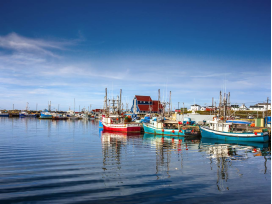
II.Natural Geography (environment and resources)
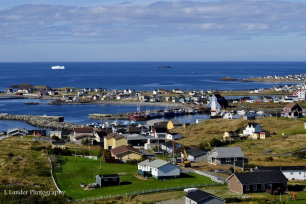
-Bonavista (2016 population: 3,448) is a town on the Bonavista Peninsula, Newfoundland in the Canadian province of Newfoundland and Labrador. Unlike many Newfoundland coastal settlements, Bonavista was built on an open plain, not in a steep cove, and thus had room to expand to its current area of 31.5 km2 (12.2 sq mi).
-Bonavista, town, eastern Newfoundland, Newfoundland and Labrador, Canada. It lies on the northeastern shore of Bonavista Bay. Cape Bonavista may have been where the explorer John Cabot first landed in 1497, but the site was probably named in 1500 by the Portuguese explorer Gaspar Côrte-Real, after Boa Vista, one of the Cape Verde Islands. An important cod- and salmon-fishing port, the town has modern fish-drying, filleting, and cold-storage plants. Bonavista was the site of the province’s first school, established in 1726. Roads connect it to St. John’s (187 miles (301 km) south-southeast) and other parts of the island. Terra Nova National Park extends around the bay’s southern shores. Inc. 1964. Pop. (2006) 3,764; (2011) 3,589.
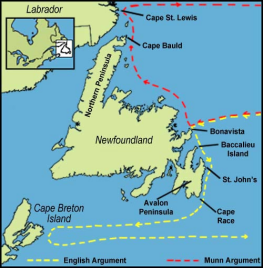
III.ECONOMY
-Average in Bonavista, NL: $17.40 per hour

-The average salary for a Labourer is $17.40 per hour in Bonavista, NL, which is 15% above the national average. Salary estimates are based on 9 salaries submitted anonymously to Indeed by Labourer employees, users, and collected from past and present job advertisements on Indeed in the past 36 months. The typical tenure for a Labourer is 1-3 years.
-Website: https://ca.indeed.com/salaries/laborer-Salaries,-Bonavista-NL
IV.Industrial Characteristics
-Employment in the Clarenville-Bonavista region is largely dependent upon the manufacturing, fishing and trapping and retail trade industries. These industries accounted for 43.5 per cent of all workers in the region in 2000. While the number of different industries in the region is directly comparable to the province and Canada, there is a much higher concentration of employment in the goods-producing sector. The oil production industry through the Whiffen Head Transshipment Facility and the fabrication facilities at Bull Arm has played a major role in the local economy over the past decade. Clarenville has undergone considerable service expansion as a result of these developments. Tourism continues to play an important role in the region as a whole, and related developments, such as those in the Trinity area, have had much success over the past decade. Economic benefits have also arisen from infrastructure additions related to the 1997 Cabot Celebrations in the Bonavista area. Like most other regions, the fishery plays a significant role in the local economy, especially in smaller communities. In 2006, there were 13 communities with at least one registered fish processing facility in the Clarenville-Bonavista region. The region is also home to the province’s only oil refinery which is located in Come by Chance, and is a major source of highpaying jobs for both the region and the province.
-Website: https://www.gov.nl.ca/aesl/files/publications-lmd-clarenville-bonavista-region.pdf
V.Attractions
1.Cape Bonavista Light
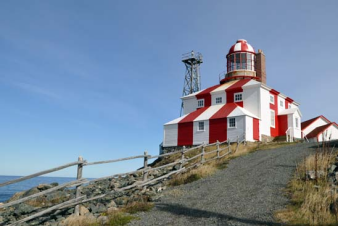
-Cape Bonavista Light is a lighthouse located on Cape Bonavista, Newfoundland. The lighthouse, which operated from 1843 until 1962, is now a provincial museum, containing an exhibition about life in a lighthouse during the 1870s.
-The lighthouse at Cape Bonavista was built between 1841 and 1843 to mark the entrances to Bonavista and Trinity bays and to aid mariners headed for Labrador. It is the fourth-oldest
-lighthouse in Newfoundland. The two-story wooden building is constructed around a masonry tower surmounted by a lantern.
-The first lamps and reflectors came from the Bell Rock Lighthouse in Scotland. This apparatus was later replaced by a catoptric system from the Isle of May in Scotland, first installed in Newfoundland in 1850 by Robert Oke at the Cape Pine lighthouse, later moved to the Harbour Grace Island lighthouse, and finally to Cape Bonavista. Both the historic light mechanisms that ended up at Cape Bonavista, the one from the Bell Rock and the one from Isle of May were installed by Robert Oke, who served as the first Chief Inspector of the Newfoundland Lighthouse Service. In 1962 the lighthouse went dark, replaced by an electric light on a nearby steel skeleton tower.
-In the 1970s the lighthouse was restored for use as a museum by the provincial government. The building contains furniture and artifacts representing the pre-1870 period. The rare catoptrics lighting system, made up of Argand oil lamps and parabolic mirrors of polished silver, is on display. Exhibits on local industry include coopering, fishing, whaling and sealing, as well as the ecological history of Cape Bonavista.
-On August 3, 2001 a disastrous electrical storm struck Cape Bonavista. As lightning struck repeatedly all around the cape, the lighthouse tower was hit three times, igniting a fire. Quick action by the fire department prevented more severe damage.
-Address: 505 Cape Shore Rd, Bonavista, NL A0C 1B0
-Phone: (709) 468-7444
-Website: https://www.seethesites.ca/the-sites/cape-bonavista-lighthouse.html
2.Dungeon Provincial Park
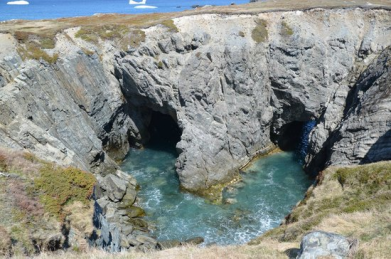
-Dungeon Provincial Park is located on the Bonavista Peninsula near the Bonavista Lighthouse. Its most notable feature is a large hole in the ground with two adjacent caves leading to the sea.
-The "Dungeon" formed when the waves began carving two caves into the sedimentary rock on the ocean side. As the caves got deeper they eventually carved out an area that could no longer support the overhead rock. This resulted in the roof collapsing forming the large sinkhole structure and two caves leading to the ocean. Eventually the roofs of the two caves will collapse and form a sea stack.
-Address: ROUTE 238, Bonavista, NL A0C 1B0
-Phone: (709) 468-7747
-Website: https://www.google.com/search?q=Dungeon+Provincial+Park&stick=H4sIAAAAAAAAAONgFuLUz9U3MMoot8hW4tZP1zc0MsgpzKms0lLMTrbSz8lPTizJzM-DM6wSS0qKEpNBzGIA9t9vqj0AAAA&safe=active&ssui=on#fpstate=trskp&trifp=kpq%253DDungeon%252BProvincial%252BPark%2526skpm%253D/g/120lqlyz%2526t%253Dd
3.Mockbeggar Plantation
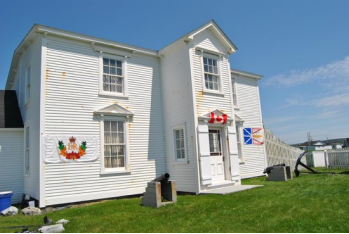
-The main house at the Mockbeggar Plantation was built in the 1870s and has been restored to 1939 – the time when Newfoundland statesman and advocate for Confederation with Canada F. Gordon Bradley lived here. A fishery plantation site since the 1700s, other buildings on the property include a large 18th-century fish store, an early 20th-century barter shop, a carpentry shop, and a cod-liver-oil factory.
-Location
Roper Street Bonavista, NL A0C 1B0
-Website: https://seethesites.ca/the-sites/mockbeggar-plantation.html
VI.History
John Cabot (Giovanni Caboto), a freelance Italian explorer, was contracted by England's Henry VII to find new lands, and a sea route to the Orient. Cabot set sail from Bristol, England in his ship the Matthew in 1497. When Cabot first saw land he reputedly said "O Buon Vista" ("Oh, Happy Sight!") giving rise to the name of the town and nearby Cape Bonavista. Cabot landed with "a crucifix and raised banners with the arms of the Holy Father and those of the King of England". The land was inhabited, as the expedition found a trail leading inland, a site where a fire had been, and "a stick half a yard long pierced at both ends, carved and painted with brazil". The harbour was not ideal, eventually requiring the construction of several breakwaters. Despite this Bonavista became one of the most important towns in Newfoundland due to its proximity to the rich fishing and sealing grounds to the north of the peninsula. The Spanish, Portuguese, French and English fished off Cape Bonavista during the 16th century, but the Spanish and Portuguese presence soon declined, leaving the French and English as the dominant powers. Tension between the French and English sometimes resulted in military action, including an unsuccessful attempt in 1704 by the French to burn the town. The French Shore, which had Bonavista as its eastern terminus, was established by the Treaty of Utrecht in 1713. Fishing rights in the area continued to be a source of tension between the French and English.
-Bonavista was a major commercial centre and the evidence for this is preserved at the Ryan Premises, a National Historic Site maintained by Parks Canada. It is a restored example of a large fish merchant's operation.
-Bonavista's status was further enhanced by the development of the Fishermen's Protective Union in the early 20th century, and the creation of nearby Port Union. During the peak years of 1891-1901, the Bonavista Peninsula's population of about 20,000 was centred in Bonavista. The Bonavista Cold Storage Co. fish plant, now a Fishery Products International operation, became the centre of fishery production after the decline of salt fish markets.
-In 1722 the first school in Newfoundland was built in Bonavista by Rev. Henry Jones.
VII.Other information
-Located on Discovery Trail Route 230, just three hours from both Gander and the Argentia ferry is Bonavista, a small coastal town with a striking rugged shoreline. Immersed in rich history, the town was the landing place of Italian navigator and explorer John Cabot in 1497. And with its close proximity to rich fishing and sealing grounds, Bonavista quickly became one of the most economically important towns in the province.
-Tourism is increasingly an anchor sector for this community, providing new jobs and economic activity. With over 1,000 heritage buildings lining the town’s streets, the Bonavista Historic Townscape Foundation, along with private businesses, have begun heritage restoration initiatives over the past decade to attract new businesses and to entice tourists. Alongside the harbour is a full-sized replica of Cabot’s ship, The Matthew. The restored Ryan Premises – of historic fish-merchant fame – is now operated by Parks Canada. The Garrick Theater, one of the oldest surviving theatres in the province, has been renovated and now houses a multi-use, 200-seat theatre and meeting space.
-In addition to the heritage attractions in Bonavista, there are a number of hoteliers and eating spots that cater to a variety of tastes. The Cape Shore Trail offers a spectacular hike over Bonavista’s rugged coastline, along with remarkable views of birds and whales (in season), culminating at the Cape Bonavista Lighthouse.
-While there is much to celebrate about the town’s gradual revival, Bonavista is facing workforce challenges. On top of skills shortages in both the trades and construction jobs, the fish plant’s workers are aging rapidly, leaving a large gap that will soon need to be filled. The local community has few training programs and the survival of those existing few may be in question. More training opportunities are needed for cultural tourism and specialty cooking at the local College of the North Atlantic’s Centre of Excellence. Training in the fishery and in trades is also needed in the area to supply people for the employment opportunities that do exist.
-Without a vibrant and diverse workforce, without increased youth and skills development in its population, Bonavista’s economic and cultural growth may be hindered. While the tide has started to turn in Bonavista, there are plenty of opportunities and potential still to be tapped for the town to experience real growth.
-Website: http://strengtheningruralcanada.ca/communities/newfoundland-labrador/bonavista/
VIII.Contact information
-Government
Mayor: John Norman
-Address: 95 Church Street, P.O. Box 279
Bonavista, Newfoundland, Canada A0C 1B0
-Phone: (709) 468-7747
-Fax: (709) 468-2495
-Website: http://townofbonavista.com/contact/
